Program Presentation at Transportation Research Board 88th Annual Meeting
PowerPoint Version (4,233 kb)
FHWA Long-Term Bridge Performance Program
"A Flagship Initiative"
Hamid Ghasemi, Ph.D.
Program Manager
Long-Term Bridge Performance Program
Turner-Fairbank Highway Research Center
Federal Highway Administration
McLean, Virginia
Outline
- Highlights
- Vision
- Methodology
- Focus Group Meetings
- Pilot Study
- Conclusions
Long-Term Bridge Performance Program (LTBP Program)
- Designated in the "SAFETEA-LU" surface transportation authorization legislation (August 2005)
- Anticipated to be a long-term research effort to improve our knowledge of bridge performance
- Funding was authorized through FY-2009
LTBP Program Activities
(January 2006 - Present)
- Outreach (i.e., Conferences, Workshops, Meetings)
- Draft Framework (U. of Delaware)
- Workshop in January 2007 (Las Vegas, NV)
- Participants: FHWA, AASHTO, Other Government Institutions, Academia, Industry, International Bridge Experts
- Short-Term and Long-Term Goals
- Specific Data to be Collected
- Sample Bridges to Test, Evaluate and Monitor
LTBP Program Activities (January 2006 - Present)
- FHWA Bridge Management Information Systems Laboratory
- Synthesis Report on Bridge Performance
- Sampling Methodology
- Data Gaps
- Deterioration Model
LTBP Program Activities (January 2006 - Present)
- July 2007 (Solicitation)
- April 2008 (Contract Was Awarded to CAIT/Rutgers University)
- May 2008 - Present (Developmental Phase)
Moving the American Economy
Friday, May 2, 2008.
"Acting Federal Highway Administrator Jim Ray"
FHWA Launches Flagship Initiative to Collect Nationwide Data on Highway Bridges - A 20-year research effort to collect data on bridges nationwide will lead to better investment decisions on bridges
Objective
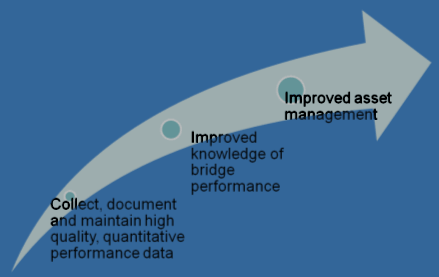
LTBP program is not intended to become a repository of vast amounts of bridge data without consideration of the value of the data in assessing bridge performance

Anticipated Impacts of the LTBP Program
- Advances in deterioration and predictive models
- Effective use of Life-Cycle Cost Analysis
- Improved inspection/condition information thru NDE and SHM
- Support improved design standards
- Improved maintenance practices
- Help foster the next generation of bridge and asset management systems
Approach
- Detailed inspection, periodic objective evaluation and monitoring (from a representative sample of bridges, excluding long-span bridges)
- Forensic autopsies of decommissioned bridges
- Accelerated Testing
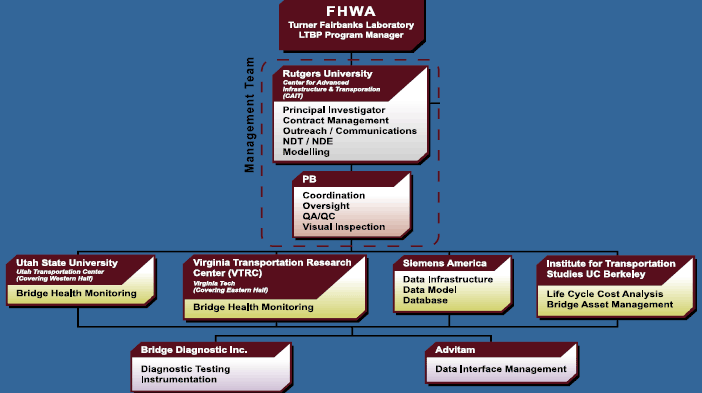
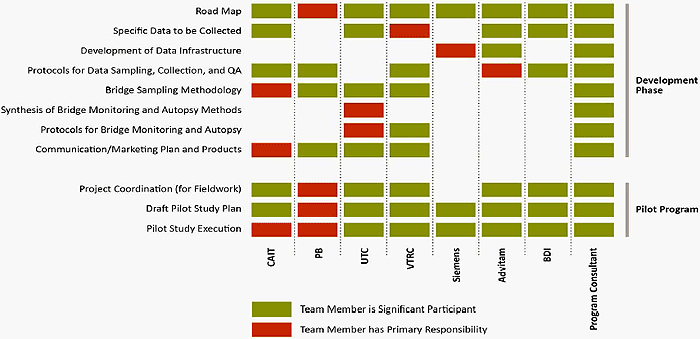
Systems Approach
- Collect scientific quality performance data from the nation's highway bridges, as representing critical node-points of the highway transportation network.
- The data and information to be collected is expected to advance our knowledge of how our highway transportation, together with its linkages to other infrastructures, performs as a complex multi-domain system, governed by dynamic interactions between human, natural and engineering systems and elements.
Top-Down/Heuristic Approach
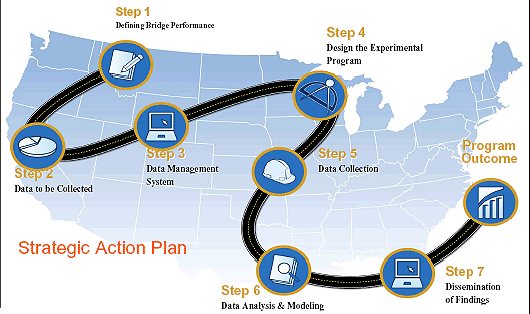
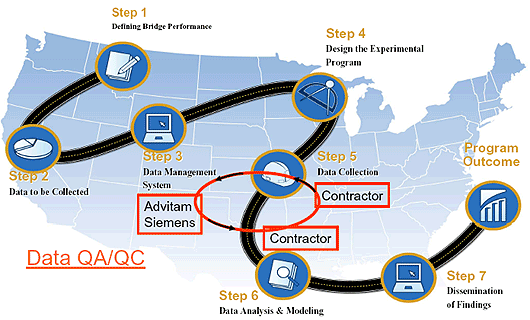
Performance, Measure, Category or Indicators
????
Bridge Performance?
- National Survey
- Number of bridges needing work
- Structural deficiencies and posting
- Condition rating, sufficiency rating and health index
- Deficiencies and load carrying capacity
- Customer satisfaction
Peformance Categories
| All Limit States |
- Serviceability
- Operation
- Scour and Floods
- Wind
- Hurricane
- Earthquakes
- Overloads
- Vessel Collisions
- Fire
- Fatigue
- Terrorism
|
Which Performance Category is More Critical?
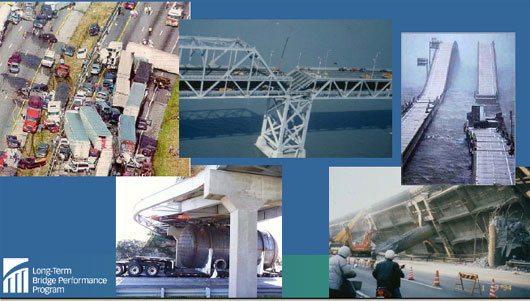
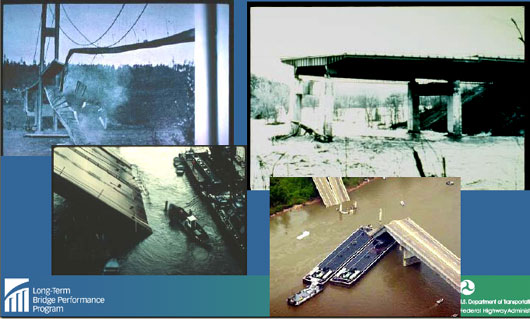

Challenges in Measuring Bridge Performance
- It is not well defined and understood or documented
- Relies too heavily on expert opinion
- Based on significant assumption or generalization
- Uncertainties
- Subjectivity of current condition ratings
- Lack of proper documentation (i.e., records of actions and costs, deferring the action)
- Incomplete data (i.e., cost, maintenance)
- Many hidden deterioration and damage escape visual inspection
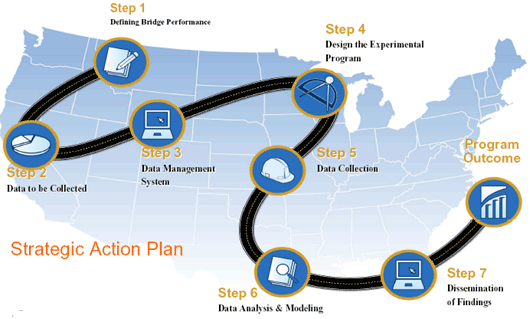
FOCUS GROUP Meetings
- Focus group meetings across a number of geographically distributed locations initiated
- Partnering with practitioners in order to get the information and data that is needed to improve the ong-term performance of our bridge systems
- The program cannot be a one size fits all approach, and should not place additional burdens on highway agencies
FGM and Pilot Study
- Summer 2009
- Detailed inspection and Monitoring of 7 bridges
- Validate protocols and processes
- Viability of the data infrastructure
- Efficacy of sensor technology
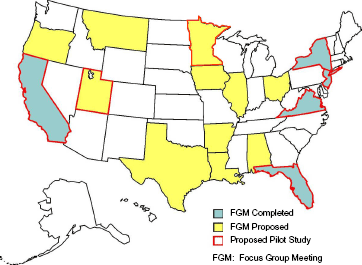
John Penrod:
Pilot Study Program manager
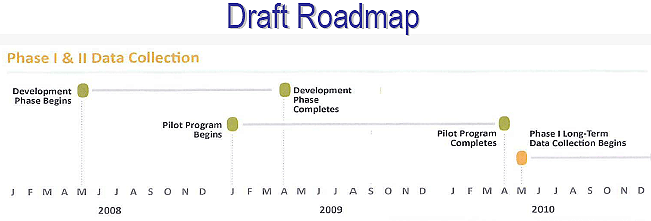
Oversight
- Internal Expert Task Group
- External Expert Task Group
Outreach
- AASHTO Subcommittees on Bridges
- Organized a Workshop at TRB
- Presentation at AASHTO Annual Meeting
- SHRP-2 Initiation
- NIST and NSF
- International community
- Plan for Industry Involvement
Conclusions
- A dynamic program
- Not a one-size fit all program
- Not a data-warehouse
- Synergy among the FHWA, stakeholders, industry, academia, international bridge community
- Consider lessons learned from the LTPP
- Successful outreach strategy
- Take advantage of in-house expertise
Conclusions
- Be cognizant of program's limitations

Web-Site and Contact Information
www.fhwa.dot.gov/research/tfhrc/programs/infrastructure/structures/ltbp/
ltbp@dot.gov
Thank You!













